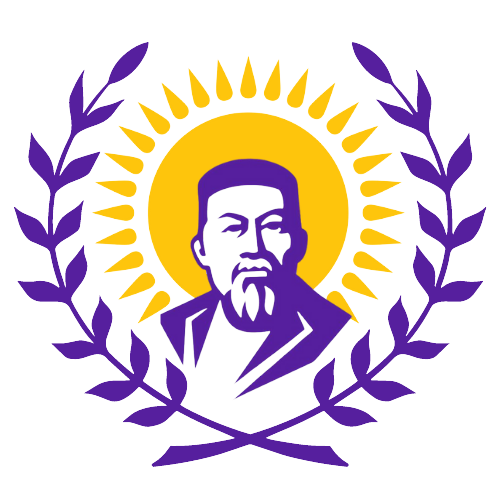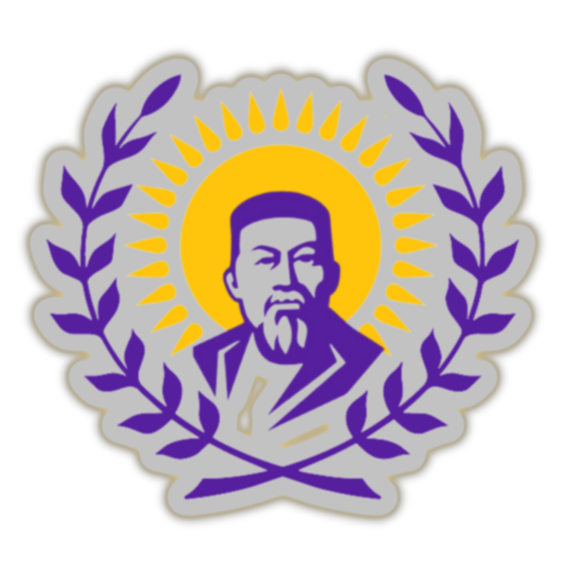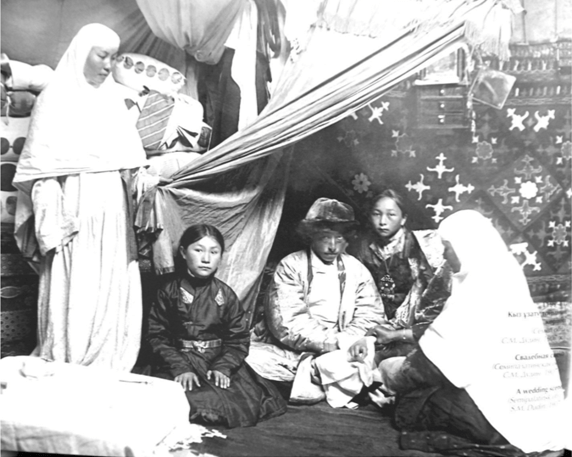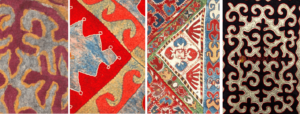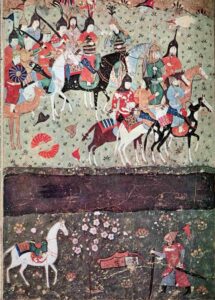In her book entitled Modernization of the Early Soviet Era in the Fate of Women of Kazakhstan, 1920–1930: Monograph (Al-Farabi Kazakh National University, 2017), Janat Kundakbayeva, Doctor of Historical Sciences and Professor of the Department of History of Kazakhstan at Al-Farabi Kazakh National University explores the gender aspect of the formation of Soviet identity in Kazakhstan: how the ideological construct of a “new Soviet woman” was created and how it was reflected in the fates of early-Soviet-era women in Kazakhstan. This construct prescribed new moral norms, different standards of behavior, and new roles in the family and society. A Soviet Kazakh woman was supposed to think differently, speak differently, and even look different from her predecessors.

Janat Kundakbayeva
Doctor of Historical Sciences and Professor of the Department of History of Kazakhstan at Al-Farabi Kazakh National University
What was women’s status and what were attitudes toward them like in the Kazakh aul (village) in the pre-revolutionary period (the nineteenth century and the twentieth century before 1917)?

As is known, before the revolution the Kazakhs had their own social organization, with clearly demarcated gender roles and a high level of symbolic content. This was based on a patriarchal agreement between a man and a woman. Here I rely on Deniz Kandiyoti’s theory. In accordance with it, I consider patriarchal relations in Kazakh society not as a relationship of dominance and subordination, but rather as a mechanism for balancing the system of social relations under the conditions of a nomadic way of life. As is known, before the revolution the Kazakhs had three types of households: nomadic, semi-nomadic, and semi-sedentary. But all farms had a high degree of cooperation because they were extremely labor-intensive. The most intensive activity was supplying water for livestock. But winter grazing also required physical effort, since it was often necessary to clear pastures after heavy snowfall in order to give the cattle access to natural grass. All members of the community had to participate in this labor. Only some children, the elderly, the sick, and women in labor did not participate.
There was a division of labor in traditional Kazakh society. Wandering with the herd, feeding, watering cattle, castration, vaccination and slaughtering, digging wells, and constructing outbuildings were considered men’s occupations. Within these tasks, men were assigned different roles according to their status and age. For example, older men were responsible for planning and making decisions about livestock, while younger men and boys performed most of the physical labor.
Because of the strict observance of the taboo on marriage for up to seven generations, a married Kazakh woman was akin to a foreigner in China due to the long distances between nomads of different clans and the high degree of separation from her relatives.
For their part, women took care of the young animals; produced livestock products (including milk, butter, and cheese); and were responsible for fuel (including making it from manure), handling wool and animal hides, and preserving meat. In addition, women were in charge of the entire household: they cooked, sewed, cleaned, washed, and put up and dismantled yurts. Children, the elderly, and young animals were entirely in the care of women.
Women actively participated in the household (they had the daily needs of the family on their shoulders: cooking; milking cattle; processing dairy and meat products; and creating such objects of material culture as felt carpets, carpets, clothes, woven items, etc.), but in general they were under the care of their husbands. A woman had the right to be supported by men: by her father in childhood and her husband in marriage, according to the norms of adat. One of the justifications for the dissolution of a marriage was a husband’s refusal to support his wife for 6 months and 13 days.

A woman had no property rights: she shared property with her husband but had no right to dispose of it. The rights to the herd and livestock products belonged to the male representatives of the clan; the privileges belonged to the elders of the clan. Another factor behind men’s level of responsibility for women in Kazakh society was the extremely low level of endogamy in Kazakh marriage practices, which led to the complete absence of links between a bride and her relatives. Because of the strict observance of the taboo on marriage for up to seven generations, a married Kazakh woman was akin to a foreigner in China due to the long distances between nomads of different clans and the high degree of separation from her relatives.
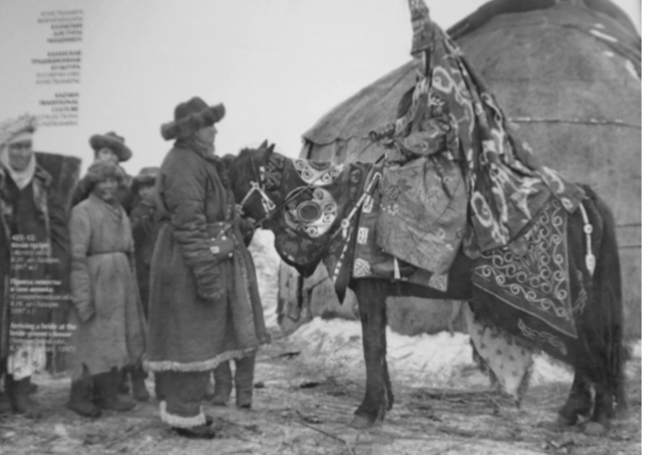
What forms of adaptation to male dominance did Kazakh women develop?
The gender order in Kazakh society was regulated by social norms. A peculiarity of Kazakh society was that informal social control was provided by public opinion in the form of social condemnation or approval. The harshest punishment a person could receive was contempt or condemnation from members of the group, while the highest reward was others’ approval.
A woman built her life strategies in accordance with social norms. From childhood, she learned the prescribed norms of behavior, her rights and duties, her position in the team, and her place in the hierarchy. The Kazakh woman observed the rules of the game—that is, she had no right to vote and no freedom of action—in exchange for which the man took full responsibility for the welfare of the family. In Kazakh tradition, disobedience by a wife—her opposition to the will of her husband—was regarded as a vice. In accordance with this, a woman did not flaunt her influence over her husband or his relatives; instead, she showed obedience.
In Kazakh tradition, disobedience by a wife—her opposition to the will of her husband—was regarded as a vice. In accordance with this, a woman did not flaunt her influence over her husband or his relatives; instead, she showed obedience.
That being said, as noted by many pre-revolutionary researchers, Kazakh women had considerable freedom compared to the women of the normative Islamic culture. In daily life, they did not cover their faces, were not secluded (as dictated by the norms of Sharia), and were not legally deprived of the right to communicate with members of other families without the permission of their husbands. These provisions were fixed by adat. Often, a woman took an active part in solving family problems, and when her husband was absent during long seasonal migrations, she was the head of the family. But this leadership was always hidden, not only within the husband’s family group, but also within the immediate family. This was expressed, for example, in supporting the father’s authority in interactions with the children, using such everyday expressions of submission as “as the father decides, so it will be” and “you need to ask your father’s permission.”
In general, a woman’s social status always depended on the status of her husband and sons. Officially, women’s main duty was to give birth and raise children. Therefore, having many children gave a woman a higher status in society. The husband’s family-kin group had control over a woman’s fertility. In patriarchal Kazakh society, the preservation of the clan, the male line, and property was an absolute value. Therefore, sons—as perpetuators of the clan and family line—were highly desirable. Girls were treated differently because they left the family after marriage. Therefore, the mother of many sons had the highest status.
The woman was excluded from formal political institutions. All decisions regarding nomadic routes, conflict resolution, and relationships with neighboring tribes were made by men, with the eldest in the family enjoying the greatest rights. Women could not take an oath in court and could almost never be present in person in court; their interests were protected either by their husband or by their husband’s relatives. One of the taboos in Kazakh society was women’s presence in the public sphere.
Kazakh etiquette clearly defined the norms of male and female behavior—that is, there was clear gender differentiation in society. This etiquette supported male supremacy in every way. For instance, the internal space of the yurt was divided into three parts: the right part was for men; the left part was for women; and the central part was for the head of the family, elders, and guests. There were also restrictions on women’s behavior related to their physical condition—such as pregnancy, postpartum bleeding or menstruation. These restrictions prohibited her from stepping over rifles, tackle, traps, saddles, or whips. The etiquette of displaying emotions was also spelled out in detail. Thus, it was considered normal for a man to show anger, rage, stubbornness, or impatience, but never for a woman to do so. The image of the ideal man in Kazakh society was harsh, stingy with affection, and laconic. The image of a woman, meanwhile, featured such qualities as humility, care, and endless patience. A woman was destined to be a hearth-keeper who guarded and protected her children; a devoted and faithful wife; an assistant to her husband. Deviation from the traditional stereotype—whether due to childlessness, an inability to manage the household, or infidelity—was regarded as a violation of custom.
A woman only had the right to show her emotions in the ritual cases of wedding, maternity, and funeral rites. Inga Stasevich, the author of a book about the status roles of a Kazakh woman, described the bodily canon of a woman mourning the death of her husband. Every aspect of a woman’s behavior during funerals and memorials was meant to indicate her despair (self-inflicted bodily injury—that is, scratching her face, arms, and chest), powerlessness (a state of emotional trance, to which she must have brought herself), and defenselessness (loud crying with textual, structured lamentations). The pose of the mourning woman and her spatial location was also expressive. She had to sit facing the hearth with her right leg tucked under her and her left leg bent at the knee. This posture is extremely uncomfortable; the sitting person’s legs fall asleep and her back hurts. Afterwards, her legs cannot hold her weight. Thus, this pose is a symbol of powerlessness, the collapse of life for the woman who has lost her supporter. Meanwhile, according to Kazakh funeral etiquette, a man was to mourn his deceased relative standing on his feet; leaning on a stick; restraining his crying; and not keening but mumbling individual phrases, all of which indicated his steadfastness, vitality, and responsibility.
In everyday life, etiquette for women depended on the woman’s age and social status. Women of each age group had a prescribed status and strictly adhered to norms. For example, a young married woman had a number of new norms of etiquette and prohibitions on her behavior: she was prohibited, for instance, to call her husband’s father, her husband’s brothers, and even her husband by their names.
Thus, Kazakh society had clearly delineated gender roles and stereotypes of behavior that maintained the gender order based on the patriarchal bargain between man and woman. The man bore the function of breadwinner and the woman showed submissiveness and care in return.
There is an opinion among historians that when Kazakhstan became part of the Russian Empire, the courts began to be filled with women’s claims against men and women’s struggle for their rights gradually began. How much does this correspond to reality?
I think this period was too early to talk about women’s struggle for their rights, since the Russian Empire did not fundamentally change the economic way of life of the Kazakhs. Yes, because of the withdrawal of Kazakh lands for the resettlement fund, pasture lands had been reduced and nomadic routes had broken down. But the Russian Empire did not break the traditional economic structure based on seasonal migrations. Forced settlement and the destruction of nomadic production occurred only in the 1930s. Therefore, in the conditions of nomadic reproduction, it was impossible for anyone to survive outside the community, especially a woman.
What role did the “women’s departments” play in Soviet policy on women’s issues in Kazakhstan?
In the process of writing this book, I studied all documents that were left by the Department of Workers and Peasant Women under the Kirov Regional Committee of the All-Union Communist Party (Bolsheviks). Such departments were established everywhere in 1919 under the central and local party committees. The idea was that these departments would direct all work on the education of women in the spirit of socialism. Moreover, they had to organize their work in such a way as to make women different. Women had to understand and accept the ideas of socialism, they had to allow themselves to work, to be in the limelight, to have a voice. Women had to understand that marriage and divorce, childbearing and childbirth, housekeeping and the possibility of public work were all now in their hands. Assessing the work of the women’s departments (active from 1919 to 1930) today, many scientists believe that it was declarative in nature. The heaps of documents left behind by these departments are considered paperwork. But I believe that the women’s departments—both in Kazakhstan and throughout the Soviet Union—did a tremendous amount of work that had no immediate impact, but rather effects of a delayed nature.
Women’s departments appeared in 1921 and functioned until 1930 in Kazakhstan, when the Women’s Department of the Central Committee of the CPSU (Bolsheviks) was abolished and reorganized into a women’s sector of the agitation and mass campaigns departments of the party committees. This persisted until 1934. Thus, women’s departments in Kazakhstan functioned for about ten years. It should be emphasized that in addition to general difficulties (understaffing, financial issues), there were also difficulties conditioned by the specifics of Kazakhstan. It was a huge territory with regions that had their own specifics. For example, women’s departments in the Ural Province had to work with Kazakhs (in the nomadic auls), Russian women, and Ural Cossack women. But in southern and southeastern Kazakhstan (Syrdarya Region, Alatau District, and Karakalpak Autonomous Region), annexed to the KASSR as a result of the demarcation of the lands of Central Asia in 1924, there was an extremely mixed ethnic composition (there were many Uzbeks, Taranchis (Uighurs), and Dungan women), a different way of life and cultural environment (the dominance of Islamic customs and traditions). Simply put, there were many women who wore a burqa.
Despite the difficulties, women’s departments in Kazakhstan took into account the socio-economic and cultural specifics of Kazakhstan. Much of the credit for this goes to the women in charge of these departments. At the local level, they became supportive bodies for women, places they could come in search of justice. It was not a question of how well they managed the main task—to get all the women of Kazakhstan to accept the Soviet power—or how successful they were in eliminating illiteracy, or how many child care centers appeared in the late 1920s. The women’s departments of Kazakhstan did an excellent job in their basic mission of conveying the basic ideas of the Bolsheviks—that is, the ideology of the Communist Party—to every single woman.
For a certain segment of women, they became a launching pad and a springboard for their future activities. And finally, the women’s departments helped every woman to realize her rights and place in society. Of course, as throughout the country, in the 1930s there was some formalism in the activity of the women’s departments. But in general, in the pre-war period, the activities of the women’s departments were already reaping results: a layer of women who held positions in state institutions, mastered professions, and even gained education was formed.
What were the methods for modernizing family and marriage attitudes and instilling new educational, hygienic, and medical practices in Kazakh women?
As I said, the Kazakhs had their own system of family and marriage relations. We know about it from the works of Russian researchers who described them. For example, A. Levshin emphasized that until the kalym[1] is paid, the wedding does not take place. L. F. Ballyuzek, the military governor of Torgay Region, highlighted two features of marriage relations among the Kazakhs. The first feature is the forced nature of the marriage. The second is the payment of kalym as a basis for marriage. In addition, everyone knows that polygamy was allowed among the Kazakhs, and there was also amengerism.[2] The Bolsheviks understood the purely material aspects of kalym: “from the cradle sold and bought for kalym.” They saw in polygamy an unequal relationship between a man and a woman, “a slave to the shameful customs of polygamy,” and the quintessence of powerlessness was the custom of amengerism: “as a thing passed on after the death of her husband through the family line.”
Upon coming to power, the Bolsheviks began to fight the old customs in the sphere of family and marriage relations by adopting a number of legislative acts. In Kazakhstan these included the Decree of the Central Executive Committee and the Council of People’s Commissars of the KASSR “On the Cancellation of Kalym” (1920), the Decree of the Council of People’s Commissars of the KASSR “On the Marriage Law of the Kyrgyz” dated January 17, 1921, and the Law “On the Punishability of Polygamy” (1920). By the mid-1920s, the Bolsheviks had established legal liability for forced marriage (1922), for bigamy and polygamy (1924), and for marriage with underage individuals, abduction, and amengerism (1925).
But the Bolsheviks clearly realized that it was impossible to change the attitudes of the Kazakhs in the field of family and marriage relations in a short time through punishment. Moreover, the Bolsheviks saw the weakness of Soviet justice in the face of longstanding Kazakh customs. They understood that great efforts were required to change the attitude of society—and, above all, women—toward these remnants of tradition. Finally, the Bolsheviks were fully aware of the degree of economic dependence of Kazakh women on men under the conditions of nomadic production. Therefore, in the fight against old marriage attitudes, they skillfully used various forms of agitation and propaganda.
Moreover, the Bolsheviks developed a core project, part of which was to influence mass consciousness through mass festivals. It should be noted that the culture of so-called “red festivals” had always been an effective weapon of the Bolsheviks. Malte Rolf, the German scholar who is the author of a book on Soviet holidays, noted that holidays were both political because they “served to popularize ideas” and a specific form of domination because they were a means of “manipulating people,” as well as “one of the channels through which regime policy was carried out.”
So, to familiarize women with the ideas of socialism, a holiday was introduced on March 8, namely the International Day of Women Workers, “a symbol of the emancipation of proletarian women.” It was introduced to the calendar in 1921; it began to be celebrated in Kazakhstan in 1923 but did not find resonance with the population. Therefore, from 1924 a new holiday was introduced: January 1, 1924, was announced as Kalym Cancellation Day. The organization and conduct of the “Kalym Cancellation Day” campaign was carried out in accordance with general trends in the development of the Soviet festive culture. There was careful preparation and in everything they followed instructions from the center. The women’s department was in charge of everything. First there were meetings, then solemn demonstrations—so-called “red feasts”—were held in Kazakh auls.
With the help of this campaign and through symbolic actions, the Bolsheviks “hoped to conquer emotionally” Kazakh women. But its introduction into the calendar of holidays shows that before the Great Breakthrough, the Bolsheviks “took into account the established cultural practice” and the ethno-cultural attitudes of the Kazakhs. This is evidenced by the fact that by introducing the holiday, they struck at the custom of payment for the bride, which was considered the basis of Kazakh family and marriage relations. In addition, it is impossible not to take into account the political and psychological impact of the campaign. It had not an immediate, but a delayed result. But its implementation was an important link in the integral policy of the Bolsheviks.

As for instilling new educational, hygienic, and medical practices in Kazakh women, they should be seen as part of an integral and elaborate Soviet project of modernity. The fact is that central to this project is the creation of common symbols that would be shared by all. One of these new symbols in society was “culture.” The Bolshevik understanding of culture was explained by Sheila Fitzpatrick, a famous American researcher of Stalinism. She identified three levels of culture that the Soviet man had to master. The first level was the culture of personal hygiene and basic literacy. The second level was the rules of conduct at the table and in public places, as well as the treatment of women. The third level was good and correct speech, neat clothes, and the ability to understand literature, music or ballet. In accordance with this common standard of culture, the Bolsheviks began to transform Kazakh women. For this purpose, they used a vast arsenal of propaganda and agitation methods, including a mobile agitation station, the Red Yurt (Kzyl Otau), specially developed for Kazakhstan. Moving from aul to aul, the Red Yurt not only acquainted women with communist ideology (conversations in the Red Yurt corner on ideological topics, reading newspapers and magazines), but also with new forms of life and other standards of hygiene and sanitation. The Red Yurt had medical workers on its staff who examined women and gave lectures on contagious diseases. They gave talks on hygiene, health, rules of child care, contagious skin diseases, and sexually transmitted diseases. It should be explained that immediately after the 1917 revolution, the principles of hygiene became part of state policy in the field of medicine. Thus the Bolsheviks declared the fight against “backwardness and inertia of life.”
Paramedics became the conduits of this policy in Kazakhstan. Of course, the texts created by paramedics (who were mostly Russians) had a pronounced tinge of “cultural colonialism.” They conveyed to the Kazakhs ideas about the modernization of medical practice based on preventive medicine by maintaining cleanliness in everyday life and social hygiene. As medical attendant Vasilyeva wrote in her report: “Here is what our yurt teaches: to wash laundry and children, bake bread, make good cheese and butter, go after cattle, plant vegetable gardens, read a book, raise tasks and cooperation practice, write and even think, and speak to women.”
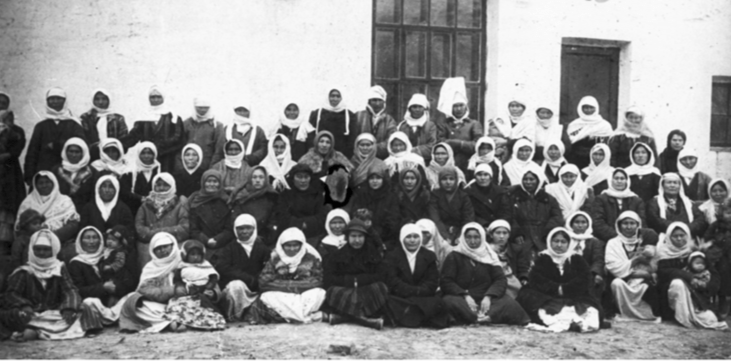
Here I would like to emphasize that the discourse on purity should not be understood literally. It should be understood as a symbol of unity, a symbol of cleansing of old meanings and introducing new meanings, as if to purify and change people’s consciousness. It would seem that the paramedics were intent on introducing the principles of hygiene that they had been taught. But the intentions of the Bolsheviks ran much deeper. After all, in order to lead a different life, the Kazakhs first needed to settle down. The Kazakhs were introduced to new forms of yurt decoration through the Red Yurt: its column of vehicles contained such new household items as a table, chairs, cupboards, and washbasins.
It is known that the entire life of the Kazakhs was adapted to a nomadic lifestyle. They had a limited set of household items, but this does not mean that they were “dirty.” Simply put, the Kazakhs had different cultural practices of housekeeping. They stored food in the living space and ate from a common dish with their hands; they had neither tables nor chairs in the household. That is, the Kazakhs had their own norms of culture and hygiene, which were based on nomadic traditions and normative Islamic culture. We draw our knowledge of the ethnographic features of the Kazakhs from the notes of travelers, participants in academic expeditions, and officials within the apparatus of the colonial regime. They were unanimous that the sanitary and hygienic norms of the Kazakhs were quite high. It is possible to dispute the degree of implementation of normative Islam in the everyday life of the Kazakhs. But one thing is beyond dispute: the Kazakhs were guided in their everyday household practices by the cleanliness norms of Islam.
As the famous Turkologist V. V. Radlov wrote: “Undoubtedly, it is due to the influence of Islam that the Kyrgyz have great order in clothing and housing, cleanliness, orderly family relations, and better ethical principles.” From an early age, the Kazakhs were inculcated with the idea that the Creator loves only clean and tidy people. Knowledge of the rules of hygiene, as well as compliance with the rules of personal hygiene, was a symbol of worship and a guarantee of receiving a reward from the Almighty. From a young age, Kazakhs learned the sanitary norms of Islamic culture and knew the rules for how to clean the body, hair, ears, nose, throat, and teeth, as well as how to take care of the beard and nails in everyday life and before offering namaz.
Obligatory hygiene included shaving body hair, circumcision of the umbilical cord and foreskin, and a prohibition on keeping animals in the same room as people. The norms of Islamic hygiene that were strictly observed by the Kazakhs included a list of defilements: bad, unfit things that pollute a person if they touch them. These “unclean things” included: urine, feces, semen, vomit, blood, dead flesh, pork, dog saliva, alcoholic beverages, and the sweat of camels and other animals. If we consider the discourse of purity through the lens of this cultural understanding, then the Bolsheviks’ introduction of new principles of hygiene and cleanliness looks like an intention to cleanse, first of all, the consciousness of Kazakh women of old meanings and habits.
How did the Bolsheviks want to use the press and Kazakh literature to promote new relations between men and women, as well as the image of a new Soviet woman?
Patterns of gender relations among the Kazakhs immediately became an object of attention for the Bolsheviks. They wanted to break this system. In doing so, the Bolsheviks first looked at gender relations as part of the old social order among the Kazakhs. Subsequently, they consciously prescribed new roles for both women and men. The Bolsheviks wanted to remake women into working mothers. In their view, a woman was to work, “produce future generations of workers,” and run the household. The state provided their protection and independence because it gave them work. As Russian researcher I. Tartakovskaya emphasized, this project was based on the idea of “freeing women from the power of patriarchal family relations in order to subordinate women, as well as men, to the power of the state.” The roles of men also changed. The function of head of the family was taken over by the state, while men were to lead the construction of the communist system and manage the new state. Thus, a man could show his dominant role in the public sphere. But his dominance at home now depended on his social status, not his gender.
The state had an alliance not with men, but with women, on whom it relied as agents of social transformation. This was a direct challenge to male power. First, the mass involvement of women in social production affected private gender relations, as it gave women economic and social freedom from men. Second, the politicization of motherhood and the relative neglect of fatherhood legitimized women’s control over children and undermined men’s position in the family. Third, women gradually became disciplinary agents of the state, as they helped the state control men’s behavior. There was a conflict of different understandings of the male role in Soviet society. A man’s word was no longer law; a woman had the right to protest her husband’s shortcomings. Moreover, women were dissatisfied with men’s non-participation in domestic life and the fact that men no longer fulfilled the role of a breadwinner.

The Bolsheviks skillfully used agitation and propaganda, as well as the press, to force members of society to accept this new gender order. First of all, through the press, agitation, and propaganda, they broke the stereotype of the Kazakh woman as the mother of a large family, whose economy she skillfully managed. The woman of the past now appeared humiliated, deprived of rights, and crushed by everyday life. She was contrasted with the image of a new—free, liberated, working, and educated—woman. In the 1930s, male dominance was no longer claimed, and men’s private power was regarded with suspicion. This distrust was reflected in silence about men in the public sphere. Mothers were glorified, women were written about, but male figures were silenced so that there was no competition with fatherly public figures. There was also a symbolic exclusion of men from the private sphere; there were no pictures of men with their wives and children in home and family settings.
The new Kazakh woman had to be literate and educated. She had to adhere to Soviet hygiene standards in everyday life. According to the Bolsheviks, the new Soviet woman had to be an active member of society and participate in the construction of a new socialist state.
Authors were also assigned canons. Above all, they had to describe the old customs, traditions, values, and attitudes as something horrible. In literature, the woman of the past should be described as destitute, deprived of all rights, sold for kalym, in an unequal marriage. Females of the pre-Soviet era were depicted as bent from the weight of the world; their figures expressed despair, even the desire to die. Soviet-era women, by contrast, straightened their shoulders and saw other perspectives of life.
In the book, I also looked at how the first Kazakh women’s magazine helped the Bolsheviks create a new image of the Soviet Kazakh woman. The target audience of the magazine was a simple Kazakh woman from a village. The magazine imposed a completely different paradigm of existence on Kazakh women, in accordance with which they had to build their lives. The new Kazakh woman had to be literate and educated. She had to adhere to Soviet hygiene standards in everyday life. According to the Bolsheviks, the new Soviet woman had to be an active member of society and participate in the construction of a new socialist state.
At the same time, the magazine was as close to its reader as possible. This is evidenced by the “friendly and unaccented” manner in which it communicated with its readers. The magazine does not contain the directive strategy of agitational publications, with their rigid business style. On the contrary, the tone of the articles was emotionally colored and personal; articles were written in a subjective manner and included individuals’ letters. The atmosphere of trusting care created in the pages of the magazine made the frightening changes of the new Soviet reality more comfortable for the Kazakh woman.
What was the attitude of Soviet Kazakh authors of the early Soviet era to the Soviet gender order?
Authors were instructed to consolidate through literary images the new gender order of the Bolsheviks. But how did they embody it? In my book, I conducted a literary analysis of a number of works by acknowledged Soviet authors who did not work against the canon. I analyzed a number of works by G. Musrepov (“Ulpan Is Her Name” and the cycle of short stories “Mother’s Courage”: “Mother’s Song,” “Mother,” “Man’s Mother,” “A Mother Who Won Death,” “An Angry Mother,” “Mother’s Advocacy,” “Mother’s Courage,” and “Mother’s Mother”), as well as the story “Communist Raushan” by Beyimbet Meilin, the short story “Sholpan’s Transgression” by M. Jumabayev, and a number of short stories by Saken Seyfullin. On the one hand, Soviet Kazakh authors played by the rules. They showed that they accepted the new order, including in gender relations. On the other hand, these authors used artistic means to express their latent attitude toward the new roles of men and women, as well as the new vision of patriarchy in which the state took over the role of patriarch. I will give just one example: the story “The Nights of Aijan the Shepherd” by G. Musrepov. At first glance, this literary work looks like a story about the courage and fortitude shown by Aijan the shepherd during a three-day blizzard, when she was left alone in the pasture to save a flock of sheep, two horses, and a camel. In fact, the rhythm system of the short story and its composition immerse us in a halo of endless condemnation of the new patriarch, a state that would sacrifice women on the altar of building socialism. Thus, the author showed how a small defenseless woman with a flock of sheep (600 sheep)—accompanied by two horses, a laid-back camel, and two faithful dogs—found herself at the mercy of the elements for three days. She faced a fierce snowstorm in the middle of the vast desert, which was plunged into darkness; bitter cold; and an attack by three starving, emaciated wolves. The author also condemned Aijan’s husband for leaving her alone in the pasture when he knew that another shepherd had asked for two days off. At a stroke, he showed him to be careless. First, he wrote that the guy was cheerful, always optimistically humming: what else did a guy need except a fast horse and a beautiful wife? But then he added that in fact the horse was far from fast and the wife was far from beautiful. He also condemned the authorities: the head of the agricultural department, who had no face in the story, but only a cracking and creaky voice, and the soulless farm manager, who asked the exhausted, silently crying heroine with a frostbitten and black face whether the cattle were intact in the final part of the story.
In this book, I addressed only a small part of the works of Soviet Kazakh authors of the pre-war period. But even this analysis allows us to draw some conclusions. On the one hand, Kazakh authors followed the state’s orders. On the other hand, they used artistic means to express their subjective attitude toward the new gender order, the new roles of men and women, and the new vision of patriarchy—where the state became the patriarch and subjected both men and women to itself.
In the last chapter of your book, you looked at women’s life stories based on documents authored by women. How did different categories of women change under the influence of the Soviet government’s gender discourse?
There is a chapter in my book about the extent to which the Soviet project was reflected in the lives of specific women. How did the rapid changes that took place in Kazakh society during Soviet-style modernization affect the lives of women? How did they feel within themselves during this difficult time? To what extent did they let the revolution and Soviet ideology in? Finally, how did they define their place in the Soviet system? I had to find texts that came from the hands of women themselves to answer these kinds of questions. But there were extremely few of them. This part of the book is the most difficult for readers who are not professional historians to understand.
Fatima Gabitova’s diaries, letters, memoirs, essays, and sketches, which her descendants have preserved and published, proved to be extremely valuable. This was the voice of a woman who belonged to the narrow circle of Kazakh creative intellectuals, which suffered most severely from the Stalinist repressions. Who was Fatima? How did she assess herself? In her autobiography, Fatima Gabitova appears as a unique woman, both in her beauty and in her innate qualities. She appears to us as extremely talented, educated, and extraordinarily persistent. A sociostructural analysis of Fatima’s texts shows that she distanced herself from the official and ideological language. This was her peculiar survival tactic: not to think nor write about what bothered her in public life, but to withdraw into the world of private life.
The second group of texts came from activists of the women’s movement. Women activists could not think of themselves outside the language of ideology, even at retirement age. Having passed through the party’s programs, they soon became an ideological force themselves, acting on par with the party leaders. The paradigm of their biographies is a hagiographic model in which attention is focused on the heroic. Their profession required them to write, but they wrote organically from the position of a participant in the construction of socialism. In these texts, the “inner man” is constantly transformed into “we.” The world of big politics is closely intertwined with the authors of memoirs. They work for government bodies. The state and the authorities occupy too much space in their memoirs. They are constantly involved in and discussing socially relevant events, even at retirement age. Their leisure time exists in the framework of communist performance. The resource of literacy and culture is high, but stereotyped.
Fatima Gabitova’s texts represent a diametrically opposed subjectivity. Her entry into modernity took place earlier and under different conditions. She is characterized by gender relations and modern parenting. A new-type family is not patriarchal and is based on friendship and equality. Terms with evaluative, emotional coloring are always used to describe her husband. She often writes about him using “He” with a capital letter, expressing that he is at the center of her universe. Her relationship with her husband is one of friendship-love. For her, the private is synonymous with the personal. The concept of “self” is clear: the “self” is hers and only hers. Her alienation from power is clearly marked in her writings. Power, which she calls in an abstract way “Soviet power,” never became part of her. Her diaries and memoirs demonstrate conscious and unconscious practices of dealing with ideological narratives. Fatima Gabitova shows empathy, solidarity, and narrative identification with other victims of terror: the families of Saken Seyfullin, Beimbet Meilin, and thousands of other innocent victims of the system.
Undoubtedly, Fatima Gabitova lived in the modern world. Both women activists and Fatima Gabitova were subjects reflecting “self” who consciously positioned themselves in historical time. They understood and analyzed the moment of time about which they wrote as part of a universal integrity. Unfortunately, the voices of ordinary, illiterate women are difficult to hear today, due to the lack of sources produced directly by them. To some extent, oral histories and interviews with descendants can fill this gap, but this will be the subject of other studies.
What were the differences between women’s status/rights and attitudes toward women in Soviet Kazakhstan and in other Central Asian republics during the period of history under study?
As many researchers have noted, prior to the revolution Kazakh women had considerable freedom compared to women with a normative Islamic culture. They did not cover their faces in everyday life, were not secluded as mandated by Sharia law, and were not legally deprived of the right to communicate with members of other families without the permission of their husbands. These provisions were fixed by adat. Islamic norms prevailed in the southern regions of Kazakhstan.
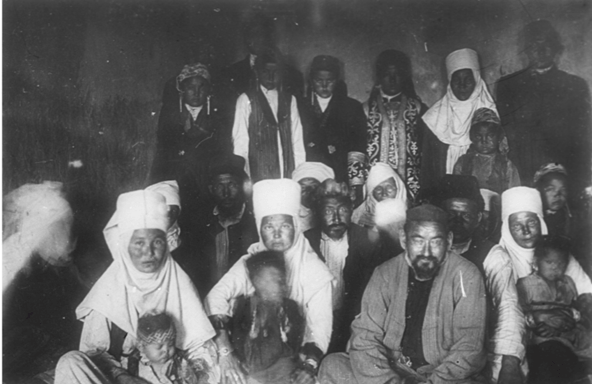
The Bolsheviks were well informed about the peculiarities of the position of women in Kazakh society. They therefore took these peculiarities into account when working in each region. In regions where gender relations were regulated on the basis of Islamic norms, the removal of the burqa became a symbol of women’s liberation. This happened in Uzbekistan when on March 8, 1927, on the initiative of Isaac Zelensky, First Secretary of the Central Asian Bureau of the All-Union Communist Party (Bolsheviks), thousands of Uzbek women took off their burqas, put them in a pile, and set fire to them in Samarqand’s Registan Square. A similar thing happened in Azerbaijan, where in 1929 about 270,000 Azerbaijani women gave up the chador. Some Tajik women, like Uzbek women, used to wear the burqa, a garment that completely covered a woman’s face and body. This type of clothing was characteristic of the northern, flat part of modern Tajikistan, namely Khujand and its surroundings. (Women could also throw other types of coverings over their heads.)
After the Soviets came to power in Turkmenistan, the struggle was just against wearing a borik.[3] The campaign was called “Down with the Borik.” During the massive campaign, cartoons in magazines, as well as medical articles, said that the headdress was heavy and therefore harmful to the posture/back and health in general; satirical songs about it also used to be aired on the radio. The final knell sounded in the 1970s, when collective farmers began to receive passports. One had to be photographed without a headdress for a passport photo. The desire for a passport was stronger than the urge to cover one’s head. This accelerated and eased the process of giving up the borik.
In Kazakhstan, the removal of the burqa affected only women in the Syrdarya Region. It was not women’s seclusion that led them to cover their bodies and faces, but the extent to which Islamic norms and customs prevailed in gender relations.
Today, one often hears that the process of women’s emancipation (that is, granting women equal rights in public, labor, and family life) began much earlier in the West than in the Soviet Union. Is this really the case?
Today, actually, everyone—feminist activists, scientists in the field of gender relations, politicians—is almost unanimous that Soviet women were “emancipated on average 50 years earlier than Western ladies.”
Soviet women gained access to education, the opportunity to work, and the chance to have their own source of income—that is to say, the chance to be economically independent of their husbands. In Austria it was not until 1975 that a law was passed stating that a woman no longer needed her husband’s permission to go to work, whereas in socialist Hungary such a law had been passed one generation earlier. Or take the right to get a credit card without a husband’s permission. Even Hillary Clinton recalls being denied a credit card in the 1970s. “I got a letter saying I couldn’t apply for my own credit card, I had to use my husband’s one. And it’s not some ancient story,” she said in an interview on The Ellen DeGeneres Show. “I was making more money than he was, and I was really ready to have my own credit card.”
Soviet women gained the right to attend university, the right to pursue professions in science and technology, mathematics, and the natural sciences. Ivy League universities did not admit female undergraduate students until the second half of the twentieth century.
We can take family law as another example. Soviet women almost immediately received the right to divorce, the right to carry their name after marriage, the right to abortion, and the right to have custody of their children after divorce. Meanwhile, in Austria, the law granting a woman the right to keep her name after marriage was adopted only in 1995. Or take the right to terminate a pregnancy. In socialist countries, the right to decide to terminate a pregnancy was given much earlier than in capitalist countries. For example, in the USSR, the relevant laws were adopted in 1920 and then in 1954. Abortion was permitted only in 1967 in England, in 1973 in the United States, in 1974 in Austria, and in 1979 in France.
Feminists today talk as if emancipation under socialism descended upon women from above and as a result, women were given control by the state (the state became a patriarch) instead of by their husbands. Kristen Godsey, a professor at the University of Pennsylvania known for her contributions to the field of post-socialist gender studies, responds: “The radical lesson is that the state intervened and did some good things on behalf of women, such things that markedly changed their lives were day care, abortion rights, etc. Feminist activism, the way it looks in the West with painted posters and rallying cries, did not achieve these things. The bureaucrats did it.”
Another feminist criticism of the socialist emancipation of women is that it resulted in women bearing a double burden: they performed the functions of both breadwinner and household slave. Godsey replies: “As soon as women stopped depending on their husbands for their basic needs for food, housing, and medical care, they gained some control over their own lives, even under regimes where political rights were restricted. Isn’t that one of the fundamental goals of feminism: to give women control over their lives?”
Thus, the answer to your question would be that Soviet/Communist women had a degree of education, economic independence, and legal status that their Western counterparts only received much later.
[1] Kalym—a groom’s gift to a bride in the form of a dowry, which remained at her disposal even after the wedding (and in the event of a subsequent divorce).
[2] Amangerism—marrying the widow of the deceased brother, or custody of the husband’s brother’s family in the event of his death.
[3] Borik—a big fur hat.
Translated from Russian Модернизация ранней советской эпохи в судьбах женщин Казахстана, 1920-1930 годы. Интервью с автором монографии
